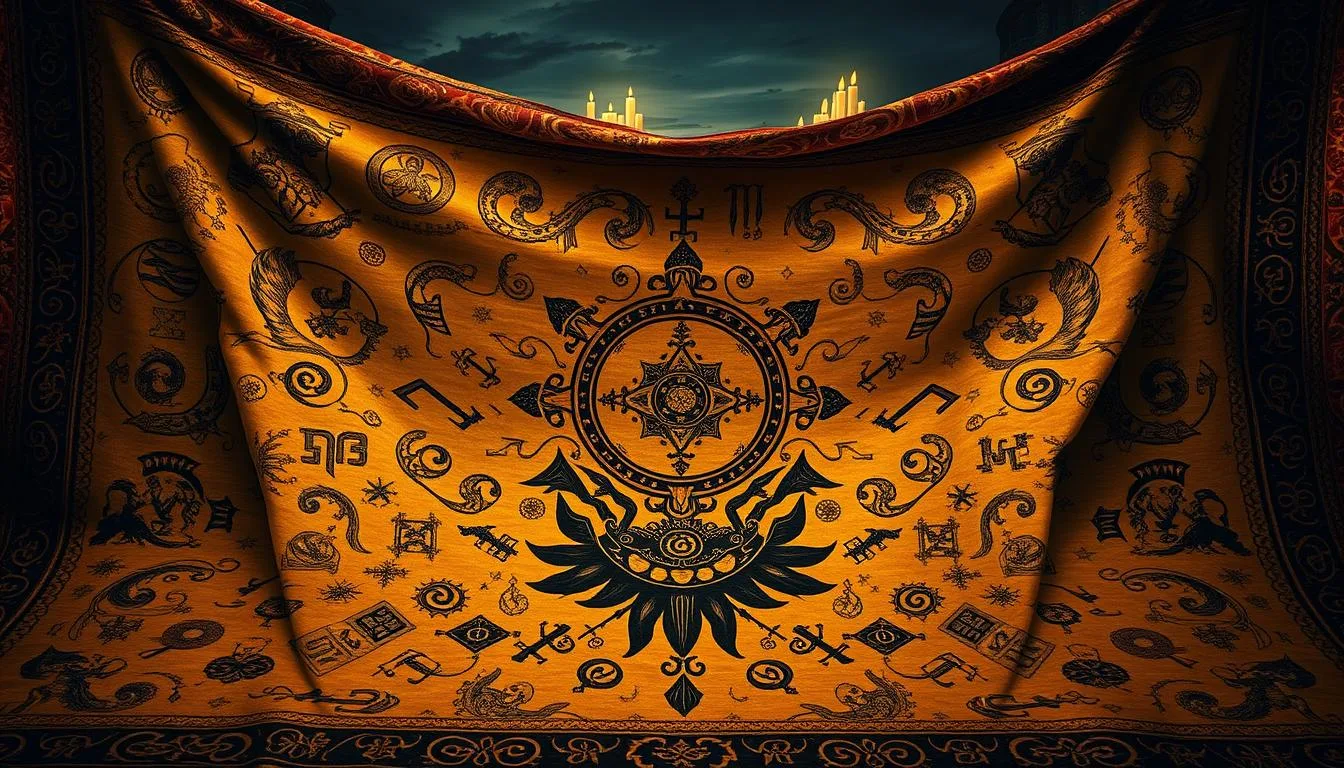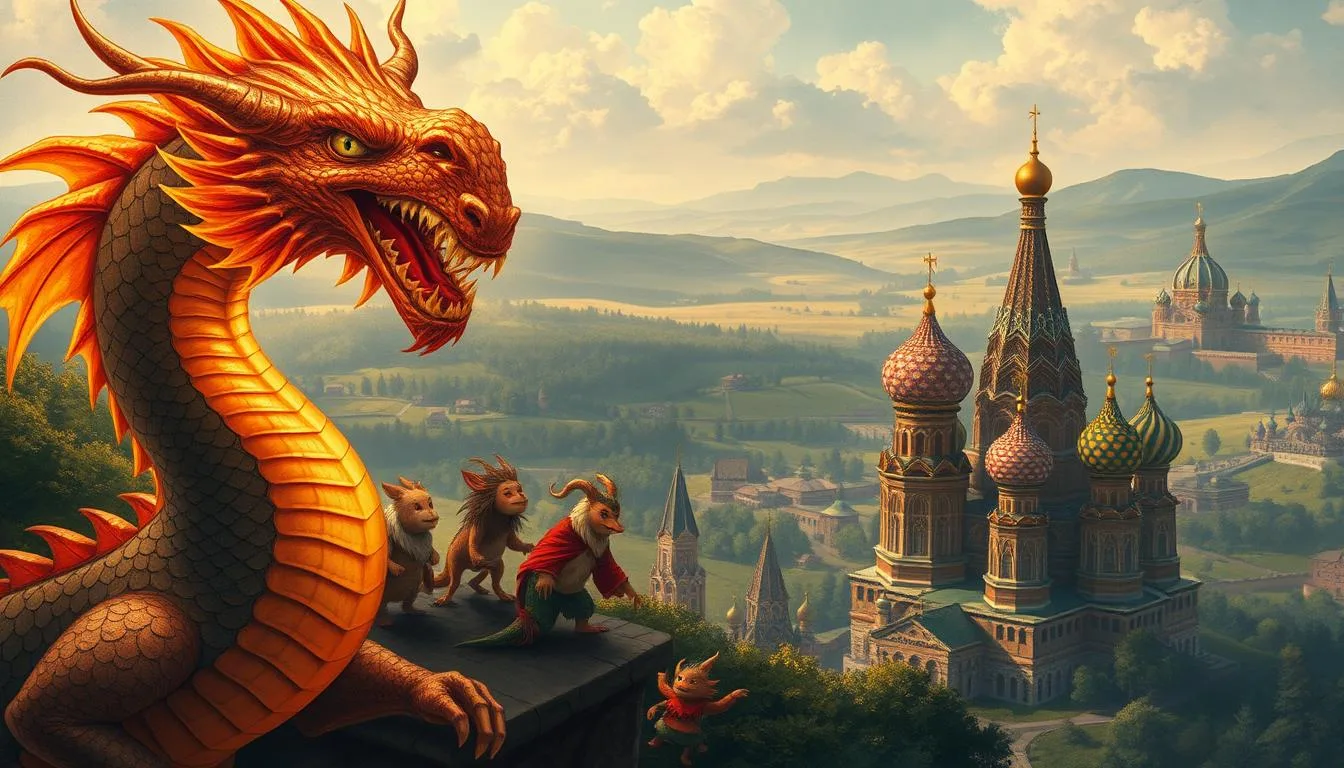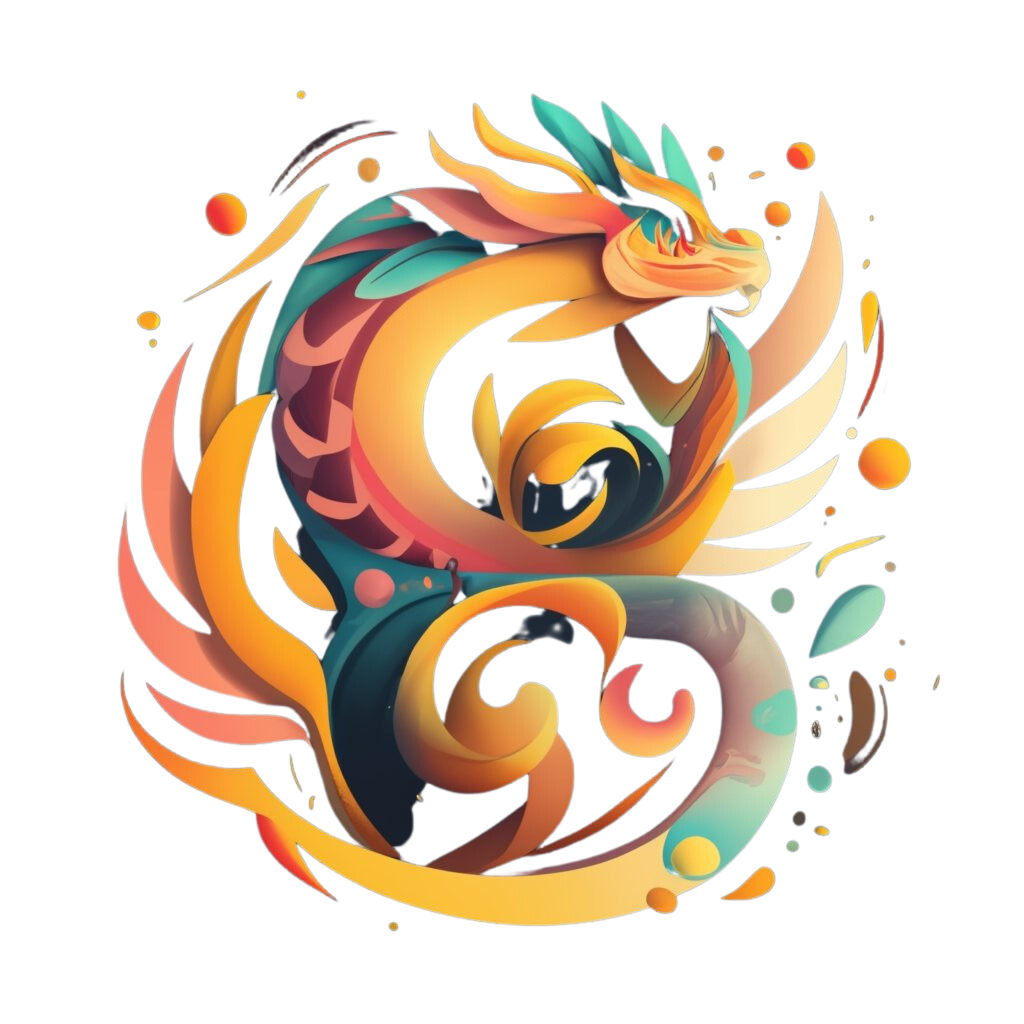Step into the mysterious world of Russian folklore. Here, shadowy forests and icy steppes hide ancient tales. These tales are of creatures both wondrous and terrifying.
These stories are more than just tales. They are living threads in Russian culture. Passed down through generations, they show the fears, hopes, and wisdom of communities.
Explore how these mythical beings still echo in modern times. They connect past and present. Discover their hidden meanings and the timeless appeal of Russian folklore that continues to inspire curiosity worldwide.
Exploring the Origins of Russian Mythical Creatures
Slavic legends come from many years of culture, spirit, and nature. We learn about these beings by looking at the beliefs of early Slavs. Their stories show a strong bond with nature and survival in tough places.
Historical Influences and Ancient Beliefs
Early Slavic tribes saw nature as full of spirits. They believed forests and rivers were alive. As the area became Christian, old beliefs mixed with new ones.
For example, old harvest god rituals turned into stories of forest protectors like Leshy. This shows how old and new beliefs lived together.
Cultural Transmission Through Generations
Stories were shared at family and village events. Elders told tales to explain the world or teach morals. Songs and dances also carried myths, making them easy to remember.
This way, Slavic legends stayed alive long before we had written records.
Folkloric Roots and Indigenous Narratives
Myths varied by region, showing how local environments shaped stories. Tales from Ukraine's steppes were different from Russia's taiga forests. Groups like the Mordvins added their own creatures, tied to their lands.
This shows the rich variety in Slavic legends. No two villages had the same stories.
Symbolism and Meanings Behind the Legends

Every myth has a story shaped by ancient traditions. Russian mythical creatures are more than just stories. They show us human experiences and cultural wisdom. These tales teach us about life, right and wrong, and nature in a magical way.
Metaphorical Representations
- Domovoi as guardians symbolize the balance between humans and home environments.
- Leshy embodies nature’s unpredictability, warning against disrupting forests.
- Rusalka represents water’s life-giving and dangerous duality in Slavic belief systems.
Spiritual and Ritualistic Interpretations
Many rituals still reference these myths. Farmers leave offerings to Domovoi during harvests. They honor their connection to land and ancient traditions.
Shamans once called upon Leshy’s spirit in healing ceremonies. They mixed myth with medicine. This shows how myths connect the physical and spiritual worlds.
Myths also showed what society values. Creatures like the Snegurochka (the snow maiden) teach us about beauty and change. Storytellers used these stories to teach ethics in a fun way. This mix of wisdom and wonder keeps these tales alive today.
The Role of Nature in the Narratives
In Russian folklore, nature is more than just a setting. It's alive and shapes the stories of mythical creatures. Forests, rivers, and mountains are like characters in the tales. They have secrets, dangers, and wonders that show what the creatures can do.
| Landscapes | Key Creatures | Symbolism |
| Forests | Leshy, Baba Yaga | Life, mystery, transformation |
| Rivers | Vodyanoy (water spirits) | Life-giving forces, hidden dangers |
| Mountains | Kikimora, Mountain Sprites | Strength, isolation, ancient power |
Seasons change the stories too. Winter's cold might keep travelers near Baba Yaga's hut. Summer's warmth lets Leshy watch over the forests. Rivers like the Volga have Vodyanoy, warning of floods or helping lost souls. These elements connect earth and myth in a special way.
Myths grow where nature is wild and free. These stories show how Russians saw the world. They believed every tree, river bend, or mountain peak had a story to tell.
Russian Mythical Creatures in Literature and Art

Mythical creatures like the Firebird and Baba Yaga have inspired artists and writers for centuries. They have woven their stories into cultural heritage. From ancient epics to digital canvases, these tales evolve while honoring their roots.
Classic Literary Works
Alexander Pushkin’s The Tale of Tsar Saltan made the Firebird famous through verse. Nikolai Gogol’s stories twisted folklore into eerie tales. These works connect old myths to today’s audiences.
Visual Representations in Traditional Art
Viktor Vasnetsov’s paintings, like The Bogatyrs, brought epic heroes to life. Folk woodcuts and embroidered textiles carried these stories into homes. They kept traditions alive through cultural heritage.
Modern Artistic Reinterpretations
Today, creators are reimagining these legends. A 2023 exhibition by artist Daria Ivanova used augmented reality. It blended ancient myths with modern tech. Below are key examples:
| Work | Medium | Influence |
| Pushkin’s Christmas Eve | Verse narrative | Introduced Baba Yaga to global readers |
| Vasnetsov’s Alenushka | Oil painting | Defined visual standards for mythical figures |
| Ivanova’s “Mythic Realms VR” | Virtual reality | Engages younger generations through immersive storytelling |
From books to pixels, these reinterpretations keep cultural heritage alive in new ways.
Guardians and Tricksters: Dual Faces of Myth

Many symbolic creatures in Russian folklore have two sides. One is kind, the other is sneaky. They show us the balance between safety and trouble, guiding or testing us.
Protective Spirits and their Roles
Domovoi watches over homes and animals. It warns of danger with whispers or sounds. Leshy, the forest spirit, punishes loggers but helps lost travelers.
These spirits teach us about trust and caring for the earth. They remind us of our duties and how to live in harmony.
Mischievous Entities and Pranks
Koschei the Deathless leads people into mazes, testing their bravery. The Domovoi’s rival, Polevoy, plays tricks on farmers if they ignore him. These pranks teach us to respect nature and be humble.
| Type | Name | Role | Symbolism |
| Guardian | Domovoi | Protects home | Family unity |
| Trickster | Leshy | Tests intruders | Nature’s balance |
These symbolic creatures show us our own battles. They teach us to be strong and respect life's ups and downs.
Regional Variations of Russian Mythical Creatures

Travel across Russia’s vast landscapes, and you’ll find how mythical creatures change. Each region has its own spirit. Local tales adapt legends to show their surroundings.
Local dialects shape names and traits. A “domovoy” (house spirit) in Siberia might be frosty-bearded. In the Volga region, villagers talk of a smaller, warmer version. These changes show how geography shapes our imagination.
Compare these regional stories:
| Region | Creature | Unique Trait |
| Siberia | Leshy | Twice the height of a man, controls winter storms |
| Urals | Lešak | Trickster with a glowing eye, leads travelers astray |
| Volga Region | Rusalka | Sings lullabies instead of luring with song |
| Northwest | Baba Yaga | Appears as a stern midwife, not just a witch |
Exploring these differences shows how folklore stays alive. Each tale reflects local history and environment.
To explore more about mythical creatures from neighboring cultures, check out our article on Mongolian Mythical Creatures: Spirits and Legends, where we delve into the fascinating folklore of Mongolia and its supernatural beings.
Integration of Russian Mythical Creatures in Modern Media
From old tales to new movies, Russian mythical creatures are everywhere. Old stories meet new tech, making legends fun for today's viewers. Let's see how these old tales stay true while reaching new fans:
Film and Television Adaptations
- Morozko (2021) makes the frost spirit a hero, using old-school animation.
- Netflix’s Shadow and Bone brings Slavic prophecies to life with CGI and old stories.
- Russian TV shows like Dom Krasavtsy mix old spirits with city life, showing both sides.
Video Games and Comics
- Games like S.T.A.L.K.E.R. 2 fill Chernobyl with lubkonov, forest spirits from old tales.
- Comics like Russian Fairy Tales: New Legends by Blackmantle Press bring leshy forest guardians to life.
- Steam games like Rusalka: The Witch of Volga use magic from old stories to solve puzzles.
These projects show off traditional art with hand-painted textures and folk patterns. They also use local voices. This way, old stories connect with people all over the world.
Preservation of Russian Legend and Cultural Heritage
Stories of rusalkas and domovoi are more than fun tales. They are key parts of Russian culture. Libraries, museums, and scholars work hard to keep these stories alive.
Universities like Moscow State University are leading the way. They digitize old manuscripts. This makes sure the tales are available in today's world.
- Academic partnerships: Universities team up with UNESCO to save endangered folklore.
- Community workshops: Storytelling events in villages keep old stories alive.
- Online platforms: Sites like the Russian Folklore Project share audio and art.
Local festivals, like Ivan Kupala, mix tradition with learning. They teach young people through dance and song. Schools now teach folklore in history classes.
This connects myths to the places they come from. By supporting these efforts, we help future generations enjoy the tales of leshy and snegurochka.
Deep Dive into Russian Mythical Creatures
Stories of creatures like the domovoi or leshy have been passed down for ages. They live on through storytelling. Today, these tales are shared in new ways, blending old and new.
Authentic Storytelling Traditions
Storytellers once met in village squares. They told tales of forest spirits to explain nature. These stories helped communities understand the world and survive.
Even now, folklore festivals keep these traditions alive. Actors perform ancient myths in rural areas.
Cultural Identity and Myth Relevance
Myths connect us to our past. They are seen in:
- Animated films that mix folklore with CGI
- Social media campaigns that share myths in short videos
Young artists use these stories to explore who they are. Moscow’s “Folklore Reborn” exhibit shows Baba Yaga as a symbol of strength. Schools teach myth analysis to connect students to their heritage.
Final Reflections on the Enigmatic Legends
Mythical stories from Russia's past still talk to us today. These tales, filled with ancient traditions and nature's secrets, share deep truths. They show us our deepest fears and biggest hopes.
Stories of forest spirits and shape-shifters are not just old tales. They live on in books, games, and movies. For instance, Baba Yaga's legend inspires video game villains. Leshy's tales show up in fantasy novels, showing myths can change with new ways to tell them.
These stories teach us to be strong and live with nature. They are just as important today as they were long ago. By sharing these tales, communities keep their heritage alive and inspire people all over the world.
Looking into these legends makes us curious about how cultures see their past. As long as we tell stories, these mysterious beings will keep their magic alive. They remind us that even the oldest tales can bring new wonder today.
FAQ
What are some common Russian mythical creatures?
In Russia, you'll find creatures like Baba Yaga, a witch-like figure. There's also Koschei the Deathless, an evil sorcerer. And then there's the Rusalka, a water spirit. Each has its own story and is important in folklore.
How have Russian mythical creatures influenced modern culture?
These creatures have made a big impact on today's culture. They show up in books, movies, TV, and video games. They inspire stories and characters that people love today, while keeping cultural traditions alive.
Are there regional variations in the stories of these creatures?
Yes, stories about these creatures vary by region. Local customs, dialects, and traditions change how they're told. This makes each area's tales unique.
What roles do these mythical creatures play in traditional Russian storytelling?
In Russian stories, these creatures teach us about good vs. evil, nature's power, and feelings. They carry moral lessons and show us values through allegory.
How can I learn more about Russian mythology?
To learn about Russian mythology, check out books, documentaries, and articles. You can also enjoy cultural festivals and storytelling events. These will give you a deeper look into these magical tales.
What is the significance of nature in Russian mythical tales?
Nature is key in Russian tales. Forests, rivers, and mountains are characters in their own right. They add magic to the stories and show how humans and nature are connected.
How are mythical creatures preserved in Russian culture today?
Efforts to keep these stories alive include research, community projects, and cultural events. These help pass down myths to new generations, keeping them relevant and cherished.
Why are these legends considered important for cultural identity?
These creatures are vital to Russian culture. They hold the heritage, history, and values of the Russian people. They help connect generations and create a sense of shared identity.
